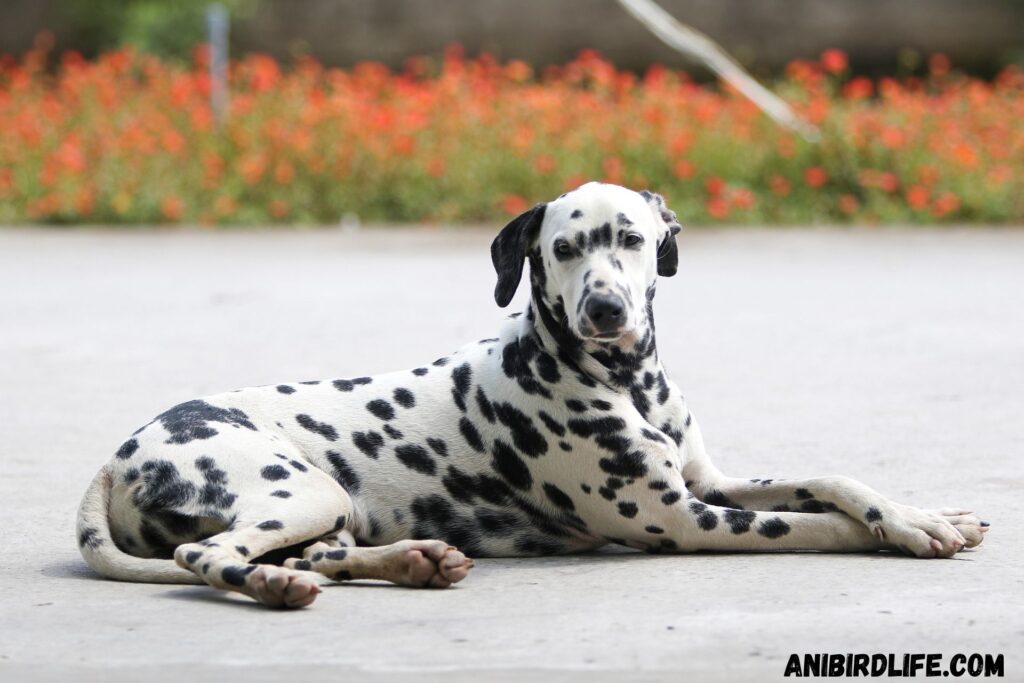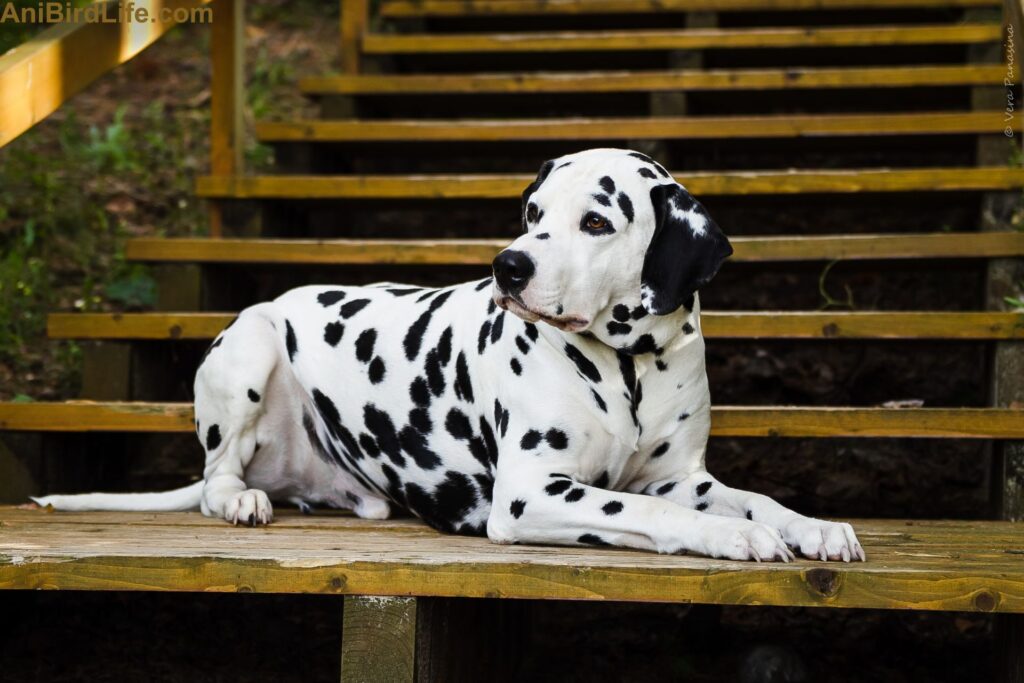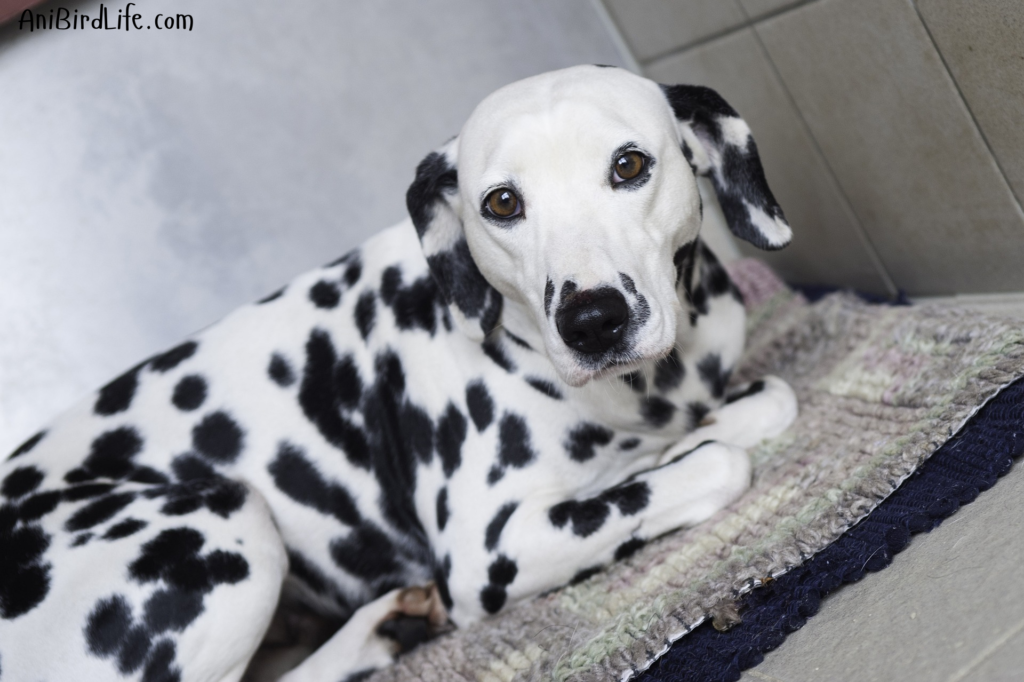Dalmatians are often recognized for their striking black or liver-spotted coats and long history as a unique breed. With their boundless energy, sharp intelligence, and unique spotted coats, these dogs make irresistibly charming companions and devoted family pets. Their association with firehouses and the movie “101 Dalmatians” has further cemented their place in popular culture.
Caring for a Dalmatian requires commitment and understanding of their specific needs. Regular exercise and mental stimulation are essential to prevent behavioral issues and ensure a happy, healthy pet. Knowing how to train and socialize Dalmatians effectively can significantly enhance their quality of life.
Understanding the breed’s characteristics is crucial for anyone considering adding a Dalmatian to their home. With the right knowledge and care, these dogs can thrive and become a beloved part of the family.
History and Origin
Dalmatians have a rich history that spans several centuries, showcasing their evolution and the development of their breed characteristics. Their origins are intertwined with various cultures, leaving a lasting impact on their identification and role in society.
Early History
The Dalmatian breed’s roots stretch deep into antiquity, with hints pointing to their presence in the historical region of Dalmatia, along the picturesque Adriatic coast of Croatia.
Historical records also link Dalmatians to the Roman era, where they served as guard dogs and companions. Their distinct coloration and spotting likely made them recognizable and valued for their aesthetic appeal.
Additionally, connections have been made to the Dalmatian’s use as a firehouse mascot in the 18th and 19th centuries, helping to solidify its role alongside horses during fire-fighting efforts.

Breed Recognition and Development
Dalmatians gained formal recognition in the 19th century, particularly within the United Kingdom.
In 1910, the American Kennel Club (AKC) officially recognized the breed. The Dalmatian became popular within the show ring and as a family pet, further expanding its reach in various cultures.
Standard breed characteristics include a well-muscled body, a short coat with recognizable spots, and a playful demeanor. Dalmatians have since remained a beloved breed, known for their loyalty and intelligence.
Breed Characteristics
Dalmatians possess distinct traits that make them unique among dog breeds. Their physical features, temperament, and capacity for training set them apart and appeal to many dog owners.
Physical Appearance
Dalmatians are best known for their striking coat, which is predominantly white with black or liver spots. These spots can vary in size and distribution, contributing to each dog’s look.
They have a medium-sized, athletic build, standing about 18 to 24 inches tall at the shoulder they typically range from 45 to 70 pounds in weight. Dalmatians have a square-shaped body, long legs, and a strong, dignified posture. The breed’s ears are thin and moderately long, with a rounded tip, contributing to their elegant profile.
Temperament
Dalmatians are celebrated for their lively and exuberant personality. They are social dogs that thrive on interaction, requiring regular exercise and mental stimulation.
Typically, they exhibit loyalty and affection towards their families but may be wary of strangers. Consistent socialization from an early age helps curb any potential shyness or aggression.
While Dalmatians are friendly, they can be strong-willed and need a confident owner who can provide proper guidance and structure. Regular engagement and positive reinforcement are essential for maintaining a happy temperament.

Intelligence and Training
Dalmatians are intelligent and eager to learn, but their independent nature can sometimes make training challenging.
They respond well to consistent, positive reinforcement techniques. Early training can help prevent behavioral issues and ensure they grow into well-mannered adults.
Due to their high energy levels, Dalmatians require various activities to keep them engaged. Participating in obedience, agility, or other dog sports can enhance their training experience and strengthen the bond between the dog and owner.
Health and Care
Dalmatians require specific attention regarding their health to ensure a long, active life. Understanding common health issues, dietary needs, and exercise requirements is crucial for their overall well-being.
Common Health Issues
Dalmatians are prone to specific health conditions that owners should monitor. Deafness, which can occur in one or both ears, affects a significant number of Dalmatians. Routine hearing assessments can detect potential issues early on, while their distinctive urinary tract system makes them prone to developing urinary stones.
A high-purine diet increases the risk of formation. Owners should consult a veterinarian for screenings and dietary adjustments.
Lastly, hip dysplasia is another concern, as it is prevalent in larger breeds. Regular check-ups can help catch early signs and allow for preventive measures.
Dietary Needs
Dalmatians have specific dietary requirements that cater to their unique metabolism. A balanced diet rich in proteins, carbohydrates, and vitamins ensures proper growth and health.
Recommended foods include high-quality dry kibble, with a focus on low-purine ingredients to prevent urinary issues. Owners should avoid excessive treats high in fat or protein, which can lead to obesity.
It’s crucial to maintain a consistent feeding schedule. Proper portion control based on age, weight, and activity level helps manage weight effectively.
Exercise Requirements
For Dalmatians, daily exercise is crucial to keeping them in top shape and ensuring their well-being. These dogs are energetic and thrive on physical activity, requiring at least 60–90 minutes of exercise each day.
Activities such as brisk walks, runs, or playtime are effective in keeping them engaged. Mental stimulation is equally important; interactive games can help prevent boredom.
Owners should include socialization with other dogs during exercise. This interaction builds temperament and confidence, ensuring a well-rounded, happy pet.
Role in Society
Dalmatians have held significant roles in various societal settings, particularly as firehouse dogs and in popular culture. Their distinctive appearance and historical functions contribute to their enduring presence.
Dalmatians as Firehouse Dogs
Historically, Dalmatians served as essential companions for firefighters. They were known for their strong instincts and protective nature.
Their ability to run alongside horse-drawn fire engines made them ideal for clearing the way. Dalmatians were instrumental in guiding and shielding horses from disturbances.
In addition to their practical roles, these dogs became symbols of firehouses. They often greeted the public, fostering a close relationship between firefighters and their communities. Even today, Dalmatians are portrayed as mascots in fire departments, solidifying their legacy in this vital role.

Dalmatians in Popular Culture
Dalmatians have been widely recognized in popular culture, particularly through films and literature. The animated film “101 Dalmatians” significantly boosted their visibility.
This movie, along with other appearances in the media, shaped the public perception of Dalmatians as playful and affectionate. As a result, demand for these dogs surged after their release.
Merchandising related to Dalmatians also became prominent, with a range of products featuring their iconic spotted coat. Their charming representation has made them a beloved breed, further embedding them in cultural consciousness.
Breeding and Genetics
Dalmatians exhibit unique genetic traits and established breeding standards that influence their health and appearance. Understanding these elements can help potential owners and breeders make informed decisions.
Genetic Predispositions
Dalmatians are known for certain genetic predispositions. One notable condition is urinalysis issues, particularly urate stones, which can be attributed to their metabolic enzyme deficiency. Other common health concerns include skin conditions and hearing loss.
Breeders must conduct health screenings, particularly for deafness. Approximately 30% of Dalmatians may be deaf in one ear or both. These factors play a significant role in the breed’s overall health and quality of life.
Genetic diversity is essential for reducing the risk of inherited disorders. Responsible breeding practices can help ensure healthier litters.

Breeding Standards
According to kennel club guidelines, Dalmatians must meet specific physical and temperamental standards. These include a well-defined coat of short, dense hair with characteristic black or liver spots. The ideal height ranges between 19 to 24 inches at the shoulder.
Temperament is vital in breeding; Dalmatians should be energetic, intelligent, and friendly. Breeders should prioritize socialization from an early age to foster well-adjusted puppies.
Health certifications are also a necessity. Breeders should provide proof of health clearances for sight and hearing, ensuring puppies are less likely to inherit common ailments. Adhering to these breeding standards supports the longevity and well-being of the breed.
Care and Maintenance
Dalmatians require consistent care to promote their health and well-being. Proper grooming and training play essential roles in their maintenance and overall happiness.
Grooming Needs
Dalmatians have a unique coat that sheds year-round, with heavier shedding occurring in spring and fall. Regular brushing, at least once a week, helps reduce loose hair and minimizes mess around the house. A stiff-bristled brush or a rubber grooming mitt can effectively remove dead hair.
Bathing should occur as needed, typically every 4-6 weeks. It’s essential to use a dog-specific shampoo to maintain the coat’s natural oils. After bathing, thorough drying is necessary to prevent skin irritation.
Ear cleaning is also important. Dalmatians are prone to ear infections, so owners should regularly check and clean their ears with a vet-approved solution. Keeping nails trimmed and teeth brushed contributes to their overall health.
Training Tips
Training a Dalmatian demands unwavering consistency, a lot of patience, and a generous dose of positive reinforcement. Early socialization is vital, immersing them in diverse settings, interactions with various people, and encounters with other animals. This helps prevent behavioral issues later.
Basic commands like sit, stay, and come from the foundation of their training. Using treats or praise as rewards encourages desired behaviors. Dalmatians respond well to structured training sessions that are short and engaging, ideally lasting around 10-15 minutes.

Consistency in daily routines also aids in their training. Regular exercise is vital to burn off their energy, which can improve focus and behavior during training. Engaging in obedience classes can provide additional structure and socialization opportunities.
Community and Support
The community surrounding Dalmatians plays a crucial role in providing resources and support for owners and enthusiasts. Both rescue organizations and dedicated owner clubs serve to foster connections among those who appreciate this unique breed.
Rescue Organizations
Numerous rescue organizations focus on Dalmatians, providing shelter and rehabilitation for abandoned or neglected dogs. Organizations like Dalmatian Rescue, Inc. and Dalmatians 101 actively work to place Dalmatians in loving homes. They offer resources such as adoption procedures, foster programs, and educational materials.
Volunteers are essential to these efforts. They often include breed enthusiasts who understand the specific needs of Dalmatians. Many organizations also promote awareness about the importance of careful breeding and responsible ownership to prevent overpopulation.
Owner Clubs and Societies
Owner clubs and societies specifically dedicated to Dalmatians help strengthen community bonds. The Dalmatian Club of America, for instance, offers events like specialty shows, obedience trials, and educational seminars. These gatherings allow enthusiasts to connect and share experiences.
Membership typically provides access to newsletters, breed information, and training resources. Clubs also encourage responsible breeding practices and provide a platform for discussing health-related concerns specific to Dalmatians. Networking opportunities within these clubs help members support each other in caring for their pets.
Legal and Ethical Ownership
Owning a Dalmatian comes with specific legal and ethical responsibilities. Understanding legislation and promoting ethical breeding practices are crucial for prospective and current owners.
Legislation Affecting Ownership
Various laws govern the ownership of Dalmatians, which can vary by location. Many places require specific licenses for dog ownership, and some jurisdictions have regulations regarding breeding and sales.
Potential owners should also be aware of breed-specific legislation (BSL) that may impose restrictions on Dalmatians in certain areas. Consulting local animal control agencies can provide essential information on regulations applicable to their location.
Homeowners’ insurance policies may also have clauses related to specific breeds. Dalmatians, for example, could affect coverage or premiums due to their perceived temperament. Owners must review their policies to avoid potential legal issues.

Ethical Breeding Practices
Ethical breeding practices are vital to ensure the health and temperament of Dalmatians. Responsible breeders conduct health screenings for common genetic conditions like hip dysplasia and deafness.
They prioritize temperament and breed standards over appearance or profit, promoting the dog’s welfare. Prospective owners should seek breeders who are part of recognized kennel clubs, as these organizations often have guidelines for responsible breeding.
Additionally, adopting Dalmatians from shelters or rescue organizations is an ethical option. This not only provides homes for dogs in need but also helps combat puppy mills, which often prioritize profit over animal welfare. Ethical ownership entails making informed choices that benefit both the dog and the community.
Frequently Asked Questions
Dalmatians have unique characteristics and requirements that are important for potential owners to understand. This section addresses common inquiries about the breed’s rarity, temperament, cost, historical purpose, family compatibility, and barking tendencies.

What factors contribute to the current rarity of Dalmatians as pets?
The decline in Dalmatian popularity can be attributed to several factors. A rise in awareness of their specific needs and health issues has led many potential owners to consider other breeds. Additionally, the association of Dalmatians with movie hype has led to irresponsible breeding, which can result in temperament issues.
What are the usual traits and temperament of a Dalmatian?
Dalmatians are characterized by their boundless energy and spirited playfulness. They often exhibit strong loyalty to their families and require regular physical activity to prevent boredom. This breed can be independent and strong-willed, making consistent training important.
How does the price of a Dalmatian puppy stack up against other breeds?
The cost of a Dalmatian puppy typically ranges from $500 to $2,000, depending on the breeder and puppy lineage. While this price is comparable to many breeds, it can be higher than others that may not have the same level of demand or breeding standards.
What was the original purpose of breeding Dalmatians?
Originally, Dalmatians served as carriage dogs and protectors of horses. Their unique build and high energy made them excellent companions for firefighters and coachmen. This historical role has contributed to their resilience and adaptability.
Can Dalmatians be suitably introduced into a family setting?
Dalmatians can flourish in family settings when given the right socialization and training. They are generally good with children and can be affectionate companions. Owners should ensure that children are taught how to interact with the dogs respectfully.
Are Dalmatians prone to bark more frequently than other breeds?
Dalmatians can tend to bark, especially if they become bored or anxious. While they are not the most vocal breed, they may use barking to express their needs or alert their owners. Proper training and exercise can help manage this behavior.
